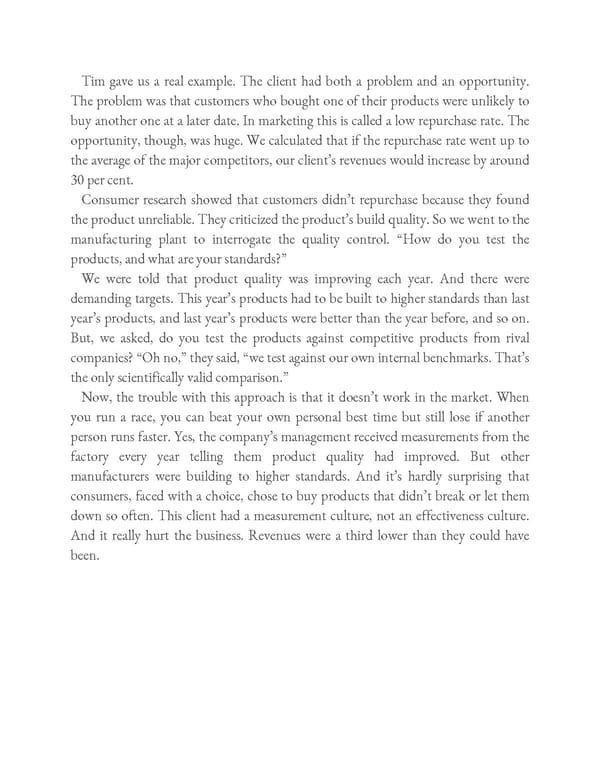Tim gave us a real example. The client had both a problem and an opportunity. The problem was that customers who bought one of their products were unlikely to buy another one at a later date. In marketing this is called a low repurchase rate. The opportunity, though, was huge. We calculated that if the repurchase rate went up to the average of the major competitors, our client’s revenues would increase by around 30 per cent. Consumer research showed that customers didn’t repurchase because they found the product unreliable. They criticized the product’s build quality. So we went to the manufacturing plant to interrogate the quality control. “How do you test the products, and what are your standards?” We were told that product quality was improving each year. And there were demanding targets. This year’s products had to be built to higher standards than last year’s products, and last year’s products were better than the year before, and so on. But, we asked, do you test the products against competitive products from rival companies? “Oh no,” they said, “we test against our own internal benchmarks. That’s the only scientifically valid comparison.” Now, the trouble with this approach is that it doesn’t work in the market. When you run a race, you can beat your own personal best time but still lose if another person runs faster. Yes, the company’s management received measurements from the factory every year telling them product quality had improved. But other manufacturers were building to higher standards. And it’s hardly surprising that consumers, faced with a choice, chose to buy products that didn’t break or let them down so often. This client had a measurement culture, not an effectiveness culture. And it really hurt the business. Revenues were a third lower than they could have been.
 Ogilvy on Advertising in the Digital Age Page 223 Page 225
Ogilvy on Advertising in the Digital Age Page 223 Page 225